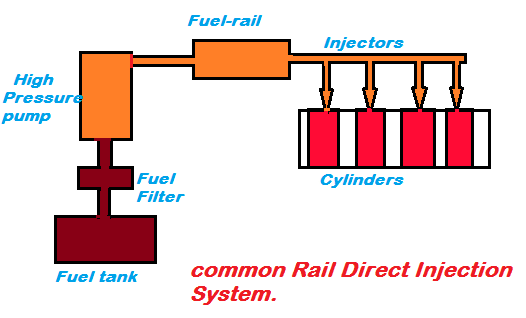In the context of transportation, particularly railways and aviation, the terms “main line” and “chord line” refer to different concepts associated with routes and connections. Here’s an explanation of the differences between the main line and chord line:
Main Line:
- Definition:
- Railways: The main line in railways refers to the principal route or track that connects major cities, regions, or hubs. It is the primary network backbone and typically serves as a major corridor for passenger and freight transportation.
- Aviation: In aviation, the term “main line” is not commonly used to describe a specific route. Instead, it often refers to major commercial airlines that operate large aircraft on long-haul routes. For example, an airline’s “main line fleet” consists of its larger and more significant aircraft.
- Characteristics:
- Railways: The main line is characterized by its prominence in the railway network, connecting major population centers and serving as a key transportation artery.
- Aviation: In aviation, “main line” is more commonly used in the context of airlines, distinguishing between major carriers operating large aircraft and regional or subsidiary carriers.
Chord Line:
- Definition:
- Railways: In railways, a chord line is a shorter and more direct railway line that connects two main lines, bypassing a longer route. It is designed to improve connectivity and reduce travel time between specific points.
- Aviation: In aviation, the term “chord line” refers to an imaginary straight line that connects the leading edge to the trailing edge of an airfoil (such as an aircraft wing or a control surface). It serves as a reference for aerodynamic analysis.
- Purpose:
- Railways: Chord lines in railways are constructed to provide a more direct connection between two main lines, improving efficiency and reducing travel time between specific destinations.
- Aviation: The chord line in aviation is a fundamental reference line used in aerodynamics to describe and analyze the geometry of an airfoil. It helps define angles of attack, pitch angles, and other aerodynamic characteristics.
Here’s a comparison between the main line and chord line in table format:
| Characteristic | Main Line | Chord Line |
|---|---|---|
| Railways | The principal route or track connecting major cities, regions, or hubs. It is the primary network backbone. | A shorter and more direct railway line that connects two main lines, bypassing a longer route. Designed to improve connectivity and reduce travel time between specific points. |
| Aviation (Usage) | Not commonly used to describe a specific route. Often used to refer to major commercial airlines operating large aircraft on long-haul routes. | Not commonly used in the context of aviation routes. In aerodynamics, it refers to an imaginary line connecting the leading edge to the trailing edge of an airfoil. |
| Railways (Purpose) | Serves as a major corridor for passenger and freight transportation, connecting major population centers. | Constructed to provide a more direct connection between two main lines, improving efficiency and reducing travel time between specific destinations. |
| Aviation (Aerodynamics) | Not applicable. | An imaginary straight line connecting the leading edge to the trailing edge of an airfoil. Used as a reference for aerodynamic analysis, defining angles of attack, pitch angles, and other characteristics. |
| Network Backbone | Forms the primary network backbone in the railway system. | Enhances connectivity by providing a direct link between two main lines, acting as a shortcut between specific locations. |
| Travel Time | Associated with long-haul travel and connectivity between major hubs. | Intended to reduce travel time between specific points by providing a more direct route. |
| Examples | Main railway lines connecting major cities or regions. | Chord lines connecting two main railway lines, often bypassing a circuitous route. |
| Aerodynamic Analysis | Not applicable. | Essential for defining aerodynamic characteristics of an airfoil, such as angles of attack and pitch angles. |
| Commercial Aviation Fleet | Refers to major airlines operating larger and more significant aircraft on long-haul routes. | Not applicable. |
This table summarizes the key differences between the main line and chord line in the contexts of railways and aviation.
In summary, the main line refers to the primary route in a railway network or major carriers in aviation, while the chord line refers to a shorter railway line connecting two main lines or an imaginary line on an airfoil used for aerodynamic analysis. The usage and meaning of these terms may vary between the railway and aviation contexts.
Frequently Asked Questions – FAQs
- What is the main line in railways, and what role does it play in the transportation network?
- Answer: The main line in railways refers to the principal route connecting major cities or regions, serving as the primary network backbone for passenger and freight transportation.
- How does a chord line differ from a main line in railways, and what is its purpose?
- Answer: A chord line in railways is a shorter and more direct line connecting two main lines, designed to improve connectivity and reduce travel time between specific points.
- In aviation, what does the term “main line” commonly refer to?
- Answer: In aviation, “main line” is often used to describe major commercial airlines operating large aircraft on long-haul routes.
- Is the term “chord line” used in the context of aviation routes, and if not, how is it commonly used in aviation?
- Answer: The term “chord line” in aviation refers to an imaginary straight line connecting the leading edge to the trailing edge of an airfoil. It is used as a reference for aerodynamic analysis.
- How does the main line contribute to the efficiency of railway transportation?
- Answer: The main line serves as a major corridor, connecting population centers and facilitating efficient passenger and freight transportation over long distances.
- What specific purpose does a chord line serve in the railway system, and when is it typically constructed?
- Answer: A chord line in railways is constructed to provide a more direct connection between two main lines, reducing travel time and improving efficiency. It is typically built to bypass longer, circuitous routes.
- In aerodynamics, why is the chord line important for analyzing the characteristics of an airfoil?
- Answer: The chord line in aerodynamics is an imaginary line connecting the leading edge to the trailing edge of an airfoil. It serves as a reference for defining angles of attack, pitch angles, and other aerodynamic characteristics.
- Can a chord line be utilized in aviation for route planning or navigation purposes?
- Answer: No, the term “chord line” is not commonly used in the context of aviation routes. Instead, it is primarily employed in aerodynamics to analyze airfoil geometry.
- How does a chord line contribute to the reduction of travel time in railways?
- Answer: A chord line in railways provides a more direct connection between two main lines, acting as a shortcut and reducing travel time between specific destinations.
- Do all major railways have designated main lines, and are chord lines common in railway networks?
- Answer: Yes, major railways typically have designated main lines connecting major hubs. Chord lines are constructed strategically to enhance connectivity and efficiency between specific points in a railway network.




